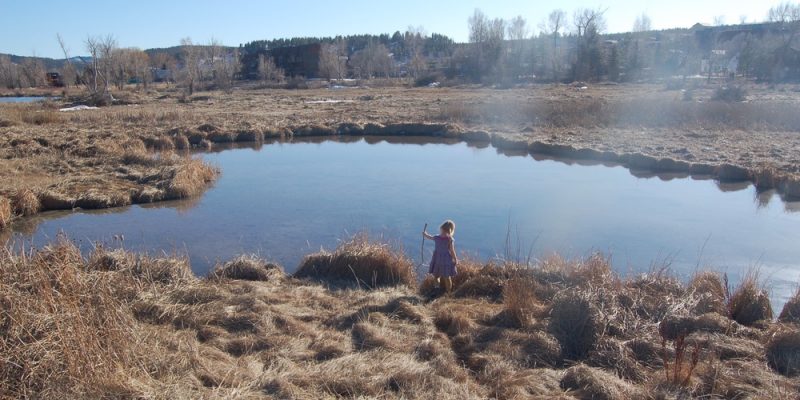I thought I was going to spend this morning, March 6, writing about our remarkable hot springs wetlands.
In preparation, I’d taken my two granddaughters, Amelie and Simone, along with Amelie’s friend, Vivy, for a walk through the wetlands yesterday… and we snapped a few photos.

But I ended up writing, instead, about the excitement and anxiety around the discovery of a “new” global illness, apparently caused by the occasionally-deadly coronavirus-19, also known as COVID-19. You can read that editorial here. (I’ve put the word “new” in parentheses for reasons that will become clear, I hope, in Part Two of that article series.)
So this editorial installment will be brief. More on Monday.
We were headed home from the Sisson Memorial Library, following a surprisingly entertaining presentation on the subject of Newton’s Laws of Motion by second and third graders from Pagosa Peak Open School. Who knew physics could be such fun? (That’s a subject for a future article, I imagine.)
When I turned down South Sixth Street instead of heading directly home, the girls asked where we were going.
“I’m going to take some photos at the wetlands. I’m writing an article about it in the Daily Post.”
“What is ‘the wetlands’?” one of the girls asked.
This question took me by surprise. I assumed that everyone knew about our downtown wetlands. Certainly, these three girls had taken numerous walks with me along the Riverwalk, through the wetlands. Numerous walks. We’d seen and commented on the wildlife — birds, mostly, and occasional deer. But apparently, we’d never talked about the term “wetlands”.
And even more importantly, we had never talked about why this particular municipally-owned wetlands is somewhat unique, in the state of Colorado.
The reason for its unique nature was partly explained on one the informational signs we passed on our subsequent walk on the Riverwalk trail.

“This riparian wetlands is unique in the fact that in addition to the river water running through it, it has warm water rich in minerals flowing into it from the neighboring hot spring. The warm water allows the ponds to stay warmer, creating a livable environment for wildlife and vegetation all year long.
“You may notice that some of the plants are covered with white powder. This powder is a product of evaporated mineral water which contains alkaline, a form of salt. Excess salt may be problematic for the environment because it could harm fish and farmers’ food crops.”
I found this short explanation fascinating because it tied in so nicely with what we heard from the Audubon Society, during their presentation to the Town Council on February 27.

